Gallery: Visions of Interstellar Starship Travel
Spaceships of the Future
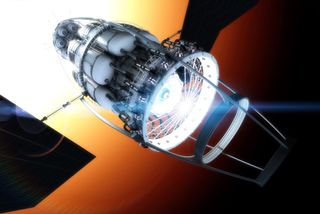
Hungary-based space illustrator Adrian Mann is a graphical engineer for Project Icarus, an effort to research the possibilities for interstellar travel. When scientists conceive of spaceships for travel to another star, most proposals require advanced and exotic propulsion mechanisms, including nuclear power and antimatter power. The following illustrations by Mann show some of the proposed concepts for vehicles to take us beyond the solar system.
Saturn Rockets
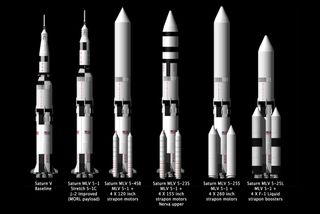
During the Apollo program, NASA investigated many options for uprating the Saturn V, from stretching the 1st stage to adding enormous solid rocket boosters, and even a nuclear powered upper stage – NERVA – that could be used for missions to Mars.
NERVA Spacecraft
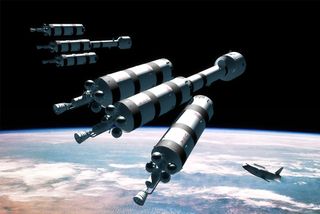
Two nuclear powered NERVA spacecraft being assembled in orbit, with the crew being ferried with an early design space shuttle, for the journey to Mars.
Orion Spacecraft
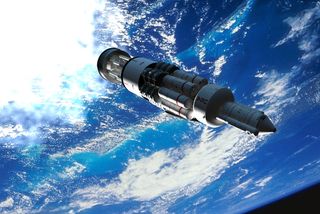
The Saturn V could also have carried an Orion spacecraft to orbit. Powered by nuclear explosions, the Orion spacecraft leaves orbit for Mars.
Orion Mars Spacecraft
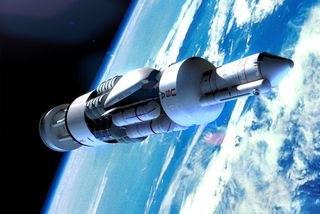
The Orion Mars spacecraft shown here has a crew accommodation section, 2 Mars landers in the form of lifting bodies, and enough small nuclear devices to propel the ship to and from Mars.
SuperOrion
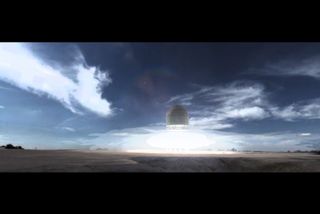
Given the colossal power of nuclear explosions, enormous Orion ships were envisaged, to be launched from remote desert areas such as Jackass Flats in the Nevada Test Range.
Bussard Funnel
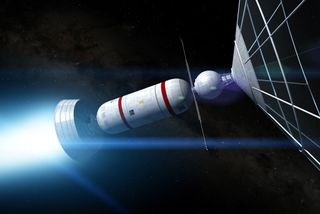
The major problem with trying to devise a ship to travel between the stars is that of fuel. Robert Bussard devised a ship that would use a huge magnetic funnel to collect hydrogen from space to use as fuel in an interstellar ramjet.
Get the Space.com Newsletter
Breaking space news, the latest updates on rocket launches, skywatching events and more!
Bussard Funnel Thrust
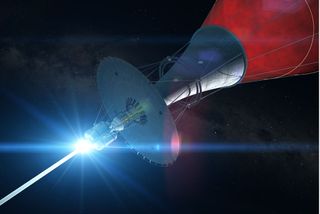
While Bussard's spacecraft concept looks appealing, calculations have shown that the thrust of the engine may not be enough to overcome drag caused by the magnetic funnel.
Daedelus Complete
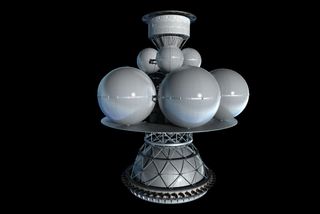
During the early 1970s, a team from the British Interplanetary Society carried out the world’s first serious engineering study of an interstellar vehicle – Project Daedalus.
Daedelus in Flight
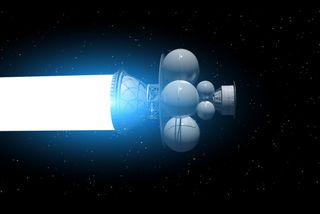
Daedalus was conceived as a two-stage vehicle, which would attain a speed of 12 percent of the speed of light, for a 50-year voyage to reach Barnard's Star.
Daedelus and Saturn V
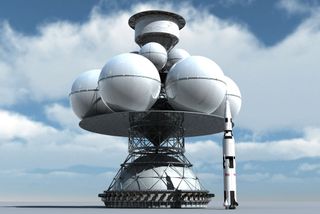
Weighing in at 60,000 tons when fully fuelled, Daedalus would dwarf even the Saturn V rocket.
Join our Space Forums to keep talking space on the latest missions, night sky and more! And if you have a news tip, correction or comment, let us know at: community@space.com.
Most Popular

